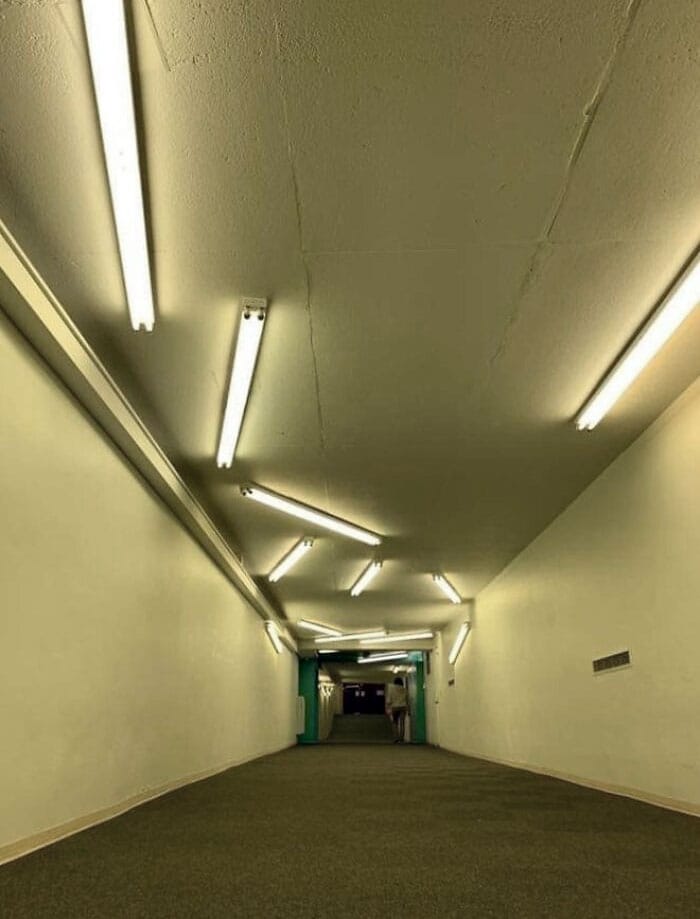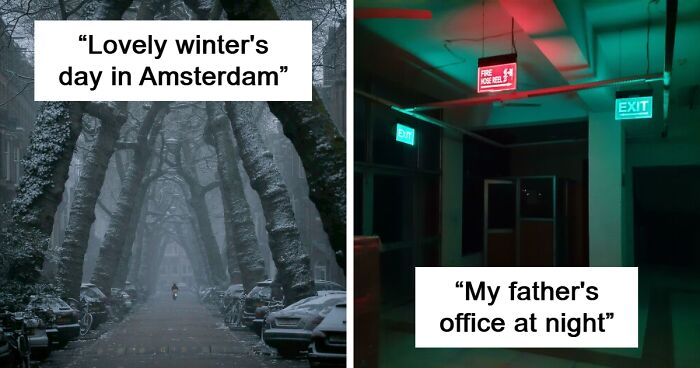If you’re a fan of horror movies and video games like us (hi!), then you probably know how much of an impact you can have on the audience with just a single shot of a simple hallway. With the right lighting and decor, you can turn the atmosphere of pretty much any mundane liminal space into something that practically oozes malice and danger.
Our team at Daily Trend Blog has compiled a list of photos of some of the scariest, creepiest, and most sinister-looking corridors ever to exist. Grab your flashlight and flask of holy water, put on your hard hat, and scroll down to start your fear-filled adventure. (…did we just see something skitter in the shadows of that doorway there? Nah, it must’ve been just our imagination…)
1: Eastern State Penitentiary

Someone who’s scared of hallways probably has deeper and darker underlying fears than drab or dull interior decorations. For example, they might have bathophobia. As per Choosing Therapy, this phobia is a fear of depth, including areas of deep water, cliffs, railings, bridges, long hallways, tunnels, caves, and wells.
Alternatively, being scared in corridors could be related to stenophobia, a fear of narrow things or places.
Or the hallways themselves might not be the main issue, but the dark. The fear of dark is widely known as nyctophobia, as well as scotophobia or lygophobia. Cleveland Clinic notes that around 45% of children might have an unusually strong fear of some kind. The fear of the dark is one of the most common phobias among kids aged 6 to 12.
2: Strong Danger Vibes In This Bar’s Basement

“The human fear response is one of the best-understood psychological adaptations that has been researched over the years. Generally, we tend to be fearful of stimuli that may have the capacity to adversely affect our capacity for survival and/or reproduction,” Dr. Geher explained to Daily Trend Blog.
For instance, a dark, dank hallway filled with spiders may pose various threats to people. “Spiders themselves can offer lethal bites, for example. Also, spaces that seem unhygienic may well be unhygienic and may well have vermin and other forms of vectors of disease,” the professor said.
“Across our evolutionary history, we evolved fears of these kinds of stimuli as such fears helped to keep our ancestors safe.”
3: The Hallway Outside Of My Apartment

“Someone may be afraid of a hallway, for instance, that they have to go through to get to their office, as an example. Even if the hallway truly is creepy, it would behoove that person to get over that fear,” he told Daily Trend Blog.
“There are various forms of therapy that have been shown to help with a variety of fears—someone with a crippling fear of this kind of stimulus may well benefit from therapy sessions with a highly trained professional.”
4: Vernon Park Mall, Kinston, North Carolina. This Old Mercury Vapor-Illuminated Hallway Is Basically The Matrix. I Adjusted Nothing With The Color

Most of us have probably heard of the fight or flight response, right? Well, not so fast there! The reality is slightly more nuanced and complex than popular culture and hearsay might have you believe.
In fact, some researchers argue that there are a total of four main ways that human beings respond to stress and threats. These are the well-known fight and flight (which are very decisive actions), as well as freeze, and fawn.
The fight response happens when someone feels that they can overpower the threat in a direct fight.
5: A Quiet Hospital

On the flip side, a flight response centers on the belief that you can avoid danger by running away.
Your body gets flooded with adrenaline so that you can sprint away from any threats, for example, all of those nightmarish creatures crawling or glitching their way across the hallway.
The signs of the flight response to threats include feeling fidgety, a restless body, constantly moving your legs or arms, and dilated and darting eyes.
6: Who Installed These Horrific Lights Here?

Meanwhile, freeze and fawn instincts are very different. A freeze response has you stuck in one place when your body, instincts, and mind don’t believe that fighting or fleeing is going to work.
If you’re feeling a sense of dread, have pale skin, your heart’s pounding really quickly, and you feel stiff, heavy, cold, or numb, then you’re likely stuck in a freeze response.
7: In Between Two Industrial Buildings. This Path Leads To A Fire Escape

Fawning is the most social and verbal of all the four responses to stress and threats. Some of the main signs of a fawn response include over-agreement with somebody and trying to be overly helpful.
There’s an overwhelming sense that your primary concern is making someone else happy. In grounded terms, this would mean that you try to be excessively friendly with the source of the danger, instead of fighting them, running away, or freezing like a deer in the headlights.
8: This Is A Section Of The Tunnels Under The State Mental Hospital Where I Work

WebMD notes that fawning can be an indication that someone has had a very troubled childhood, e.g., they were neglected or rejected. Fawning is a way to soothe the threat in order to survive.
People who are prone to respond to stress by fawning are usually overly dependent on others’ opinions, have little to no boundaries, are vulnerable to narcissists, have barely any identity, and are generally easy to control or manipulate.



